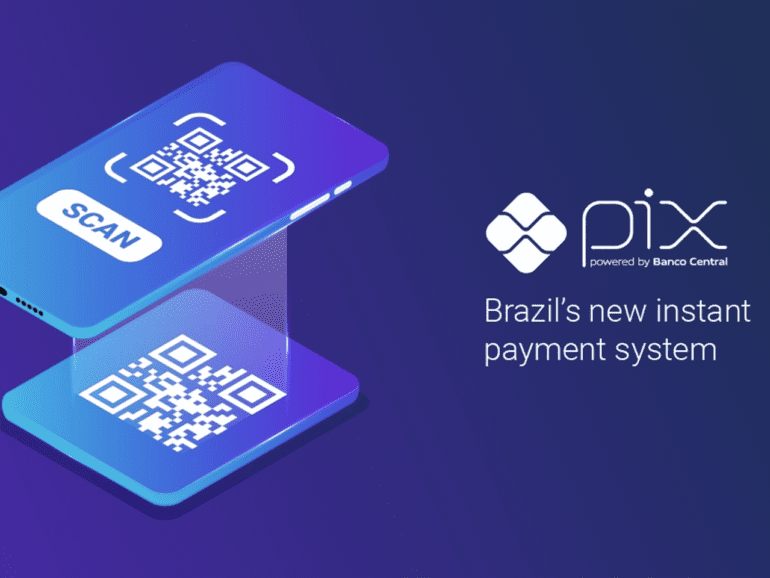There was little argument about PIX’s jaw-dropping success in Brazil from an early start.
Championed by its central bank in late 2020, the low-cost instant payment system accomplished unparalleled adoption from the get-go, with a sustained increase in transactions and users that amaze experts.
As of May 2022, the PIX system had roughly 118 million users, 56% of Brazil’s population. The monthly volume of transactions continues to hit record highs in recent months, reaching 785 billion Brazilian reais, or $165 billion, as of May. It amounts to 300,000 reais processed every second.
But it does not stop right there. Even though growth might stabilize at some point, industry observers argue that its undisputed success has also paved the way for further innovation in the market, facilitating a more decisive shift toward the digitization of Brazil.

“People embraced PIX as if they had used it for the past 10 years,” Murillo Restier, a PIX specialist at U.S. Fiserv payments technology firm, said in an interview. “Before PIX, many believed that everybody was so used to credit and debit cards that there was little room for change. Pix proved the exact opposite. That is, that disruptive products can work in the Brazilian market.”
Evolving product
In itself, PIX is an evolving product. New functionalities are expected to be released this year, which further potential to continue to disrupt the highly competitive and increasingly digitalized Brazilian payment industry.
These include potentially offering international payments through PIX, doing transaction splits, or allowing merchants to become so-called payment Initiators. In this last case, a client could confirm a transaction through its mobile that the merchant pushed. This is expected to encourage even more payments as some frictions are removed, and the whole process is made more straightforward for the end-user.
Related:
“There is a lot to build on top of PIX,” Restier, Multiacquiring product director at Fiserv, said. “There are yet many things that can be done to improve user experience, like the process of unlocking the smartphone, authenticating and reading the QR code. We really do not know how far can PIX go, and we must keep the continuous innovation mindset.”
However, certain aspects could slow down the plan. Staff at the Central bank of Brazil are currently on strike, which some believe could slow down the rollout of new releases.
But at any rate, adoption is still growing, and new features are being developed. Over 70% of all payments are done on a peer-to-peer basis, accounting for as much as 40% of all volume processed.
The next phase of PIX could include more significant participation of Business to Business payments.
Year to date, a million new companies have signed up to use PIX. That adds up to roughly 9 million firms in Brazil that are using the low-cost instant payment system. Although B2B trade accounts for barely 3% of all transactions, its monthly volume represents roughly 37%. “There is also a cultural change in that companies are making payments through PIX,” Restier said.
Pix will eat into market share
PIX has been widely used in Brazil for smaller transactions, whereas large transfers continue to be carried out through banking products such as the so-called TED transfers. Eventually, experts argue that as the user experience improves, it is likely that PIX will also eat into that market share.
But beyond credit cards and banking transfers, which continue to show growth in most cases, cash is PIX’s most prominent victim. A study by Fiserv found that some $32 billion reais in cash have been removed from the street ever since it was rolled out.
In a survey, most Brazilians identified cash as the means of payment that will be most affected by these innovations. TED and DOC, bank transfers, should also take a toll, with some Brazilians arguing that they would eventually cease to exist altogether.
On the contrary, PIX is the payment mechanism that Brazilians most expected to use shortly. Digital wallets and QR code payments came in second and third, respectively. Social networks like WhatsApp and Facebook remain distant options for Brazilians, but the digital ecosystem is increasingly competitive.
For fintech companies, that means more significant opportunities in the market. According to Henrique Marise, a Payments executive manager at Banco Pan, there is an “auspicious future” for the sector as it continues to provide sophisticated financial services.
“The central bank’s evolutionary agenda for PIX will bring new features,” he said. “As a result, Pix, which can often replace TED and debit cards, will also be able to compete with credit cards.”


